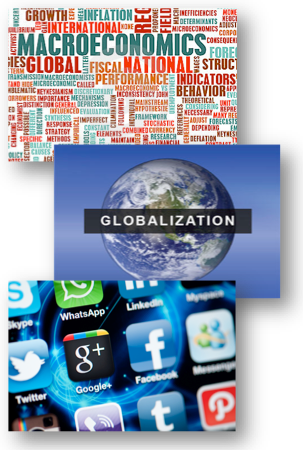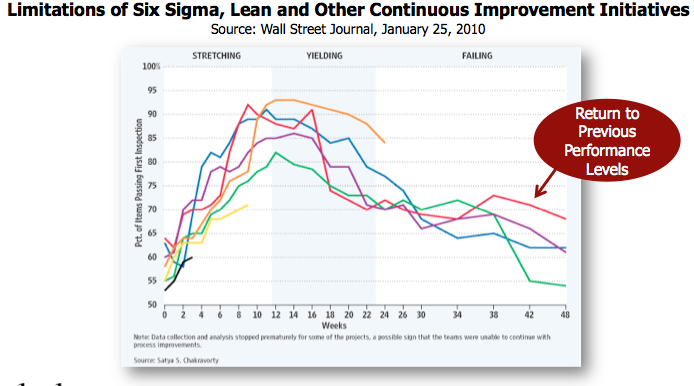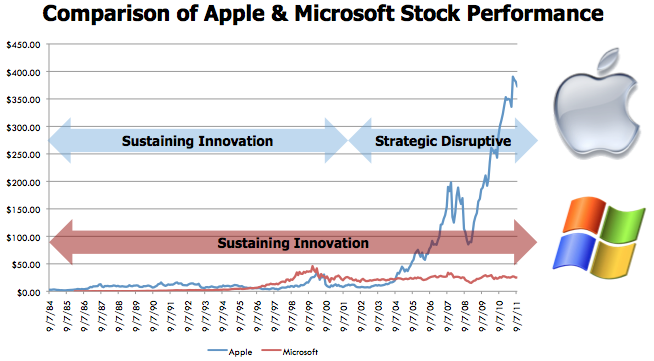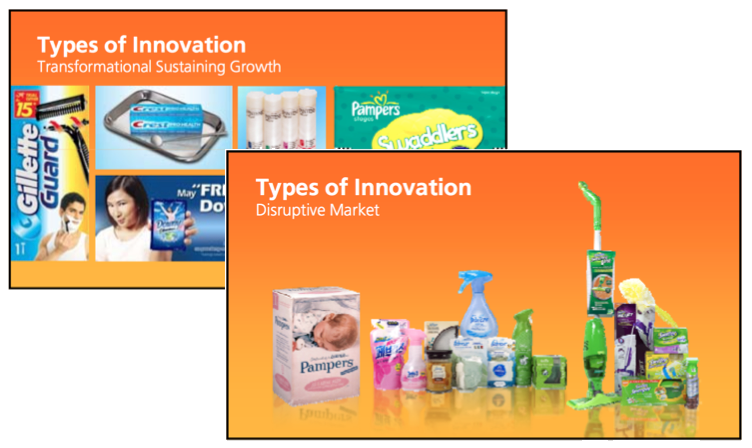What do product line extensions, in-store merchandising, and coupons have in common with supply chain continuous improvement programs like Lean and Six Sigma? They’re necessary but insufficient.
Driving Forces
Three macro trends are having a profound impact on the competitive landscape for every business. 
Businesses large and small, local and global use business sustaining innovations like those mentioned above to keep pace with these driving forces. It’s not surprising since it’s what they’ve done year after year for decades. But two charts show that companies that rely on business sustaining innovation strategies are at best maintaining the status quo and at worst, leaving themselves completely vulnerable.
The Best Case
This chart published in the Wall Street Journal in January, 2010, shows the insufficiency of continuous improvement programs like lean and six sigma: the business often returns to baseline performance in less than a year. While continuous improvement may be necessary to maintain the status quo, it’s insufficient to meet the challenges of today.

The Worst Case
But there is a worse scenario for businesses. As this chart shows, if you’re Microsoft and you rely on business sustaining innovations, you leave yourself completely vulnerable to competitors.

There are two kinds of innovation: sustaining and strategic disruptive (go here to learn more about disruptive). Some companies are aware of this. You can find reference to it in P&G’s 2010 Analyst Meeting presentation.

While sustaining innovation alone is necessary (some product categories may even require a number of line extensions in order to maintain market share, for example, and supply chain leaders would rightly argue that their continuous improvement program of choice is necessary in order to sustain their current level of performance), it’s insufficient. With the forces of macroeconomics, globalization and technology driving the need for dramatic performance improvement, businesses need to go beyond their traditional approaches. Sufficiency requires strategic disruptive innovation in products and supply chains.
Unfortunately, most companies are willing but not able. They haven’t cultivated their latent innovation capabilities and they aren’t structured to make it happen. The good news is that both of these shortcomings can be remedied.